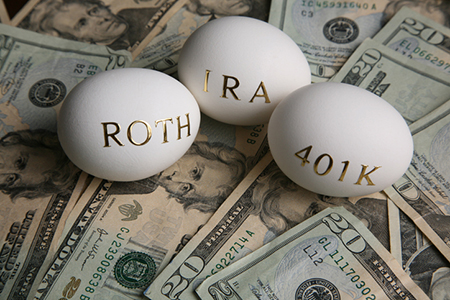(TNS)—Having money sitting in an individual retirement account that you won’t need to spend anytime soon—or maybe you’ll never want to spend—is a First World retirement problem.
Yet financial advisers have answers for the well-heeled retirees who find themselves in this fortunate situation.
If you are in that lucky group, consider these strategies on the best way to invest with your IRA or other retirement accounts when you don’t really need the money.
Take a Bigger Risk
If your primary goal is maximizing what you leave behind to your heirs or charity, you have more freedom than most.
If you don’t need the money right away, you can be more aggressive with your investing, says Jamie Hopkins, a professor at The American College of Financial Services and co-director of the New York Life Center for Retirement Income.
While the conventional wisdom for retired investors is to stick to a mix of about 60 percent bonds and 40 percent equities, if you won’t need to spend the money, Hopkins advises putting 80 percent in stocks and 20 percent in bonds.
If your money is in a target-date fund with a target set at the year you retired or were scheduled to retire, at this point it is probably mostly invested in bonds. If you like the set-it-and-forget aspect of a target-date fund, Hopkins suggests that you simply move your money to a target date 2050 fund, which will have a bigger allocation to stocks.
Consider a Roth Rollover
Beginning at age 70, the IRS requires you to take required minimum distributions, or RMDs, from your traditional IRA and pay taxes on the money. Instead, consider converting your traditional IRA to Roth IRA, on which RMDs aren’t required.
Do it over a five- to eight-year period, says certified financial planner Leon LaBrecque, CEO of LJPR Financial Advisors in the Detroit area. “You’ll still owe the IRS taxes when you convert, but you’ll have more strategies to manage—and lower—the bill.”
If a Roth conversion doesn’t seem like the right idea for you, LaBrecque suggests that you ask your accountant to estimate how much you’ll owe in RMDs over the next five to 10 years and invest that amount conservatively, so you’ll have it when you need it. Then you can safely be more aggressive with the remainder.
“After you have dedicated money to the RMD, I’d invest the rest in equities,” LaBrecque says.
Choose a QLAC
Qualified longevity annuity contracts, or QLACs, can be purchased within an IRA or other tax-advantaged retirement fund. These are a type of deferred annuity that will provide you with a regular income later in retirement. You don’t have to start taking the money until you are 85, and, in the meantime, the amount used to purchase the QLAC is sheltered from RMDs.
“I like them,” says Hopkins. “Put $125,000 (the maximum allowed by the IRS) in a QLAC, and you are protected from RMDs for the next 15 or 20 years (until you turn 85).”
What if you don’t make it to age 85? “Buy it with a return of premium so if you die earlier than expected, your heirs get the money back. It’s a good longevity hedge,” Hopkins says.
The return on investment isn’t great, he adds, but wealthy people tend to live longer than others, making it a better investment for them.
Think Really Long-Term
When determining the best way to invest money you don’t think you’ll need, consider the risks that everyone else needs to worry about: inflation and longevity.
“You might be retired for longer than 30 years,” says Maura Cassidy, vice president of Retirement at Fidelity Investments. “You have to keep ahead of it; you need inflation coverage.”
In other words, someday you may need that money. Cassidy says that while you might invest less cautiously than some people whose margins are thinner, you shouldn’t go crazy.
If you have more than you need, consider delaying the day when you invest more conservatively, she says.
“Our research indicates that retirees should be at 60 percent bonds, 40 percent stock allocation at age 65. That’s a good allocation for 15 or 20 years. Then you should sell off even more equities, so that by the time you are 80, you’re at 80 percent bonds and 20 percent equities.”
But if at age 80, you still don’t need the money, she says, “Slow it down. You might wait until age 90 to go to 20 percent equities.”
Visit Bankrate online at www.bankrate.com.
©2017 Bankrate.com
Distributed by Tribune Content Agency, LLC
For the latest real estate news and trends, bookmark RISMedia.com.




